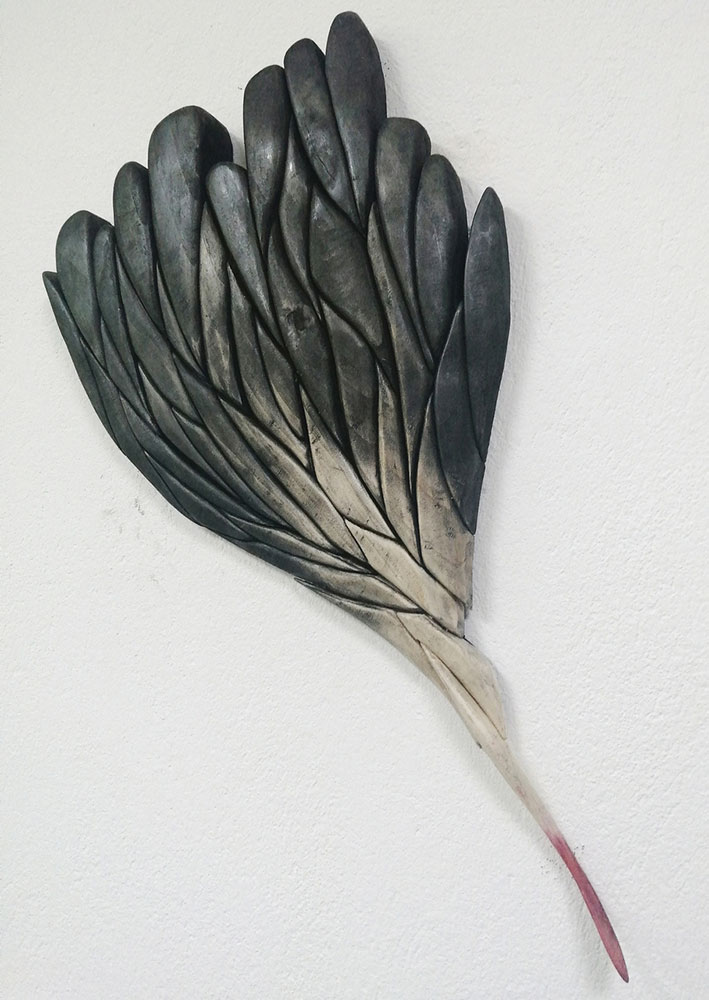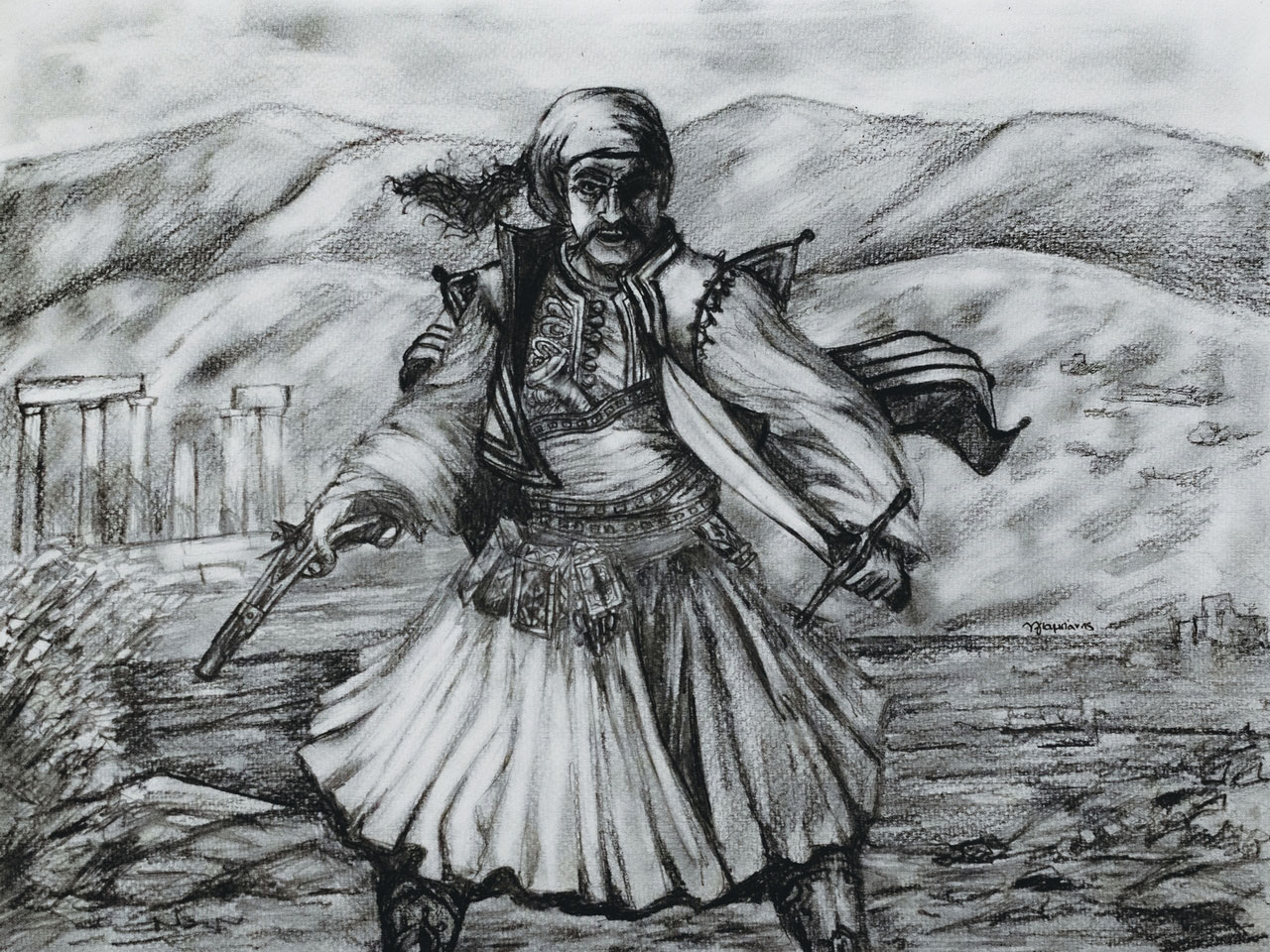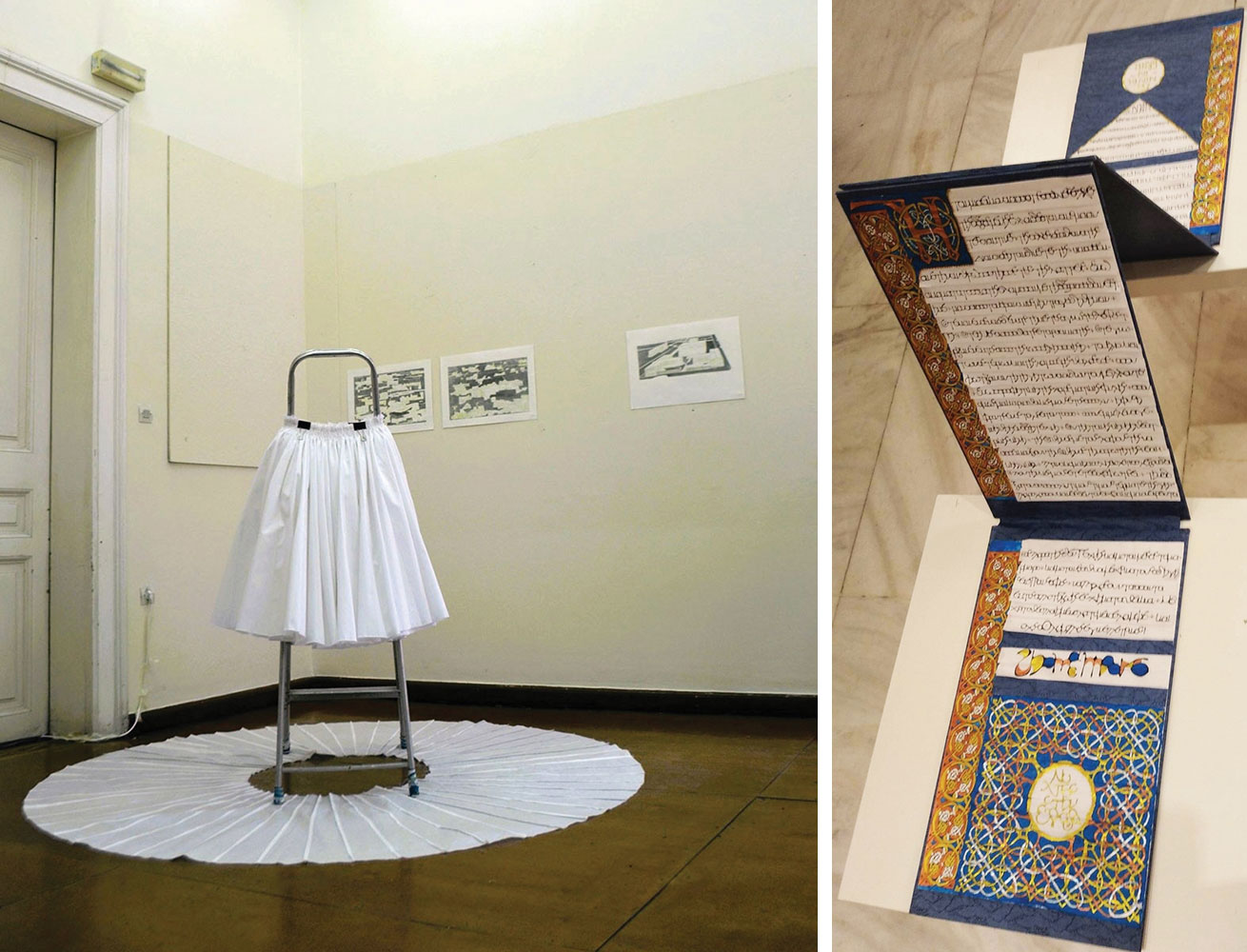PRESENTATION: The Other Side of History
 One of the biggest and most significant topics that concerns contemporary art globally is “Trauma” and how it is assimilated in the artworks of contemporary visual artists, creating the modern visual narrative. Observing the contemporary art scene internationally, we see that artist such as Gerhard Richter, Anselm Kiefer and Georg Baselitz (representatives of Germany at the Venice Biennale in 1980, the last two), through their works and powerful commentaries against Nazism, compel Germany to confront its past∙ during the 1990’s trough her videos the Iranian artist Shirin Neshat critiques the position of women in her country∙ the Palestinian artist Mona Hatoum brings to the international stage the trauma of her homeland but also many other artists introduce local issues to the international art scene, which suddenly are magnified and transformed into universal ones, in an effort to transfigure the dark pages of their history and transmute them into contemporary artistic production.
One of the biggest and most significant topics that concerns contemporary art globally is “Trauma” and how it is assimilated in the artworks of contemporary visual artists, creating the modern visual narrative. Observing the contemporary art scene internationally, we see that artist such as Gerhard Richter, Anselm Kiefer and Georg Baselitz (representatives of Germany at the Venice Biennale in 1980, the last two), through their works and powerful commentaries against Nazism, compel Germany to confront its past∙ during the 1990’s trough her videos the Iranian artist Shirin Neshat critiques the position of women in her country∙ the Palestinian artist Mona Hatoum brings to the international stage the trauma of her homeland but also many other artists introduce local issues to the international art scene, which suddenly are magnified and transformed into universal ones, in an effort to transfigure the dark pages of their history and transmute them into contemporary artistic production.
By Dimitris Lempesis
Photo: dreamideamachine Archive

The exhibition “The Other Side of History” opens today at the Islahhane Cultural Venue of Thessaloniki. The idea of the exhibition was born within a Greek framework, with five major historical events as its focal points: The War of Greek Independence (25/3/1821-3/2/1830), the The Asia Minor Catastrophe (2/5/1919- 14/9/1922), the World War II (28/10/1940-12/10/1944), the Dekemvriana events (3/12/44-11/1/1945) & the Greek Civil War (31/3/1946-10/8/1949) and finally the Military Dictatorship (21/4/1967- 24/7/1974), events that directly or indirectly affected every Greek citizen and whose influences have changed the human geography of Greece. The exhibition was first presented in the summer of 2023 at the Historic House of Lazaros Kountouriotis in Hydra, with the support of the Municipality of Hydra and the K.E.D.Y. (Center for the Development of Youth and Lifelong Learning), featuring 20 contemporary Greek artists. Today, in the unique space of Islahhane Cultural Venue that wasbuilt in the late 19th century in the center of Thessaloniki and housed the first orphanage – technical school complex of the city and the “School of Arts and Crafts Hamidiye”, restored in 2015 and now operating as a cultural multipurpose venue, 28 contemporary Greek artists are enriched, negotiating the “Trauma” through the major historical events of modern Greece. The Greek artists, from time to time, have articulated and engaged with these events, as well as their consequences, such as migration, which is intertwined with our history and culture. Migration has often had positive effects and worked in our favor, while at other times, under its psychological weight and influence, has created multiple issues and problems on social, political, and sociological level. The “Trauma” both collective and personal, stemming from the aforementioned historical events, the spoken, the acknowledged, the worked-through, transformed into poetry, text, folk song, documentaries, novels, contemporary artworks, as well as the unspoken, the raw, the untamed, the lurking, the one that still unsettles us, occupies us, and hovers in the background, takes center stage in an exhibition, where twenty artists from different generations and using various expressive media such as: painting, drawing, sculpture, photography, installations, and video, coexist in a creative dialogue, aiming to contribute, with their own vocabulary, to a narrative that encompasses all the anxieties of the past and the ambiguous fears of the future. In a Greece that is changing daily, transforms, shifts, its boundaries expand and its human geography evolves, and where within all this, everything and everyone changes, without the comfort of articulating a visual narrative on an international art scene, like the German artists or the Serbian Marina Abramović in “Balkan Baroque,” a work presented at the Venice Biennale in 1997, which won the Golden Lion. In this work, she attempted to cleanse the wounds of history in response to the war in Yugoslavia.
The Islahhane is an Ottoman complex that has served a number of different owners and uses since the late 19th century, and now is a cultural venue following a restoration by the Culture Ministry’s Central Council of Modern Monuments. The building was constructed between 1874 and 1876 to house one of the earliest technical schools for orphan children. However, its history has been one of endless transformation as it was destined to serve as refugee shelter, a state-run college and a factory. Founded in 1875 by Ahmed Midhat Sefik Pasha, it welcomed poor and orphaned boys of all religions, providing them shelter and teaching them a trade. Midhat Pasha (1822-1883), a key figure in the drafting of the Ottoman Empire’s first constitution (1876) and a two-time Grand Vizier, envisioned a specialized school known as the “School of Arts” or “Polytechnic School” (Islahhane). Its aim was to provide basic, but primarily technical education to orphaned and underprivileged boys aged 5-15, and according to literature, these schools significantly contributed to the revival of local Ottoman industry in the region. The operation of the Islahhane was so successful that a few years later, specifically in 1892, the “School of Arts and Crafts Hamidiye” was founded further east (in honor of the Sultan), and soon after, another building, the “Workshop of the Hamidiye School” (carpentry, blacksmithing, machining), was established. Over time, Islahhane was also known by the name “School of Arts and Crafts Hamidiye”. After the city’s liberation in 1912 until 1917, there is little information available. In 1922, interventions were made for housing refugees, and additionally, the outdoor space was developed to meet their needs. During the years 1980-1981, almost all of the buildings were demolished to open up today’s Olympiados Street, except for the newer Workshop of the Hamidiye School, which was spared from demolition. The Workshop of the Hamidiye School that was preserved intact underwent various uses, and until the 1980s, it operated as a foundry and machine shop. In 1992, it was designated as a historic, preservable monument, and along with its equipment, it was handed over to the Directorate of Modern Monuments and Technical Works of Central Macedonia. The directorate carried out a series of interventions from 2004 to 2009, and in 2010, the definitive study for the restoration and reuse of the building was drafted. Today, restored and fully functional, Islahhane is a modern Cultural Multipurpose Venue.
Participating Artists: Io Angeli, Dimitris Anyfantakis, Aimilia Balaska, Lamprini Boviatsou, Panos Charalampous, Kostas Christopoulos, Giorgos Divaris, Annalina Fotopoulou, Maria Genitsariou, Nikos Giampanis, Manolis Giannadakis, George Harvalias, Ioanna Kazaki, Nikos Kryonidis, Dimitris Lempesis, Aggelos Papadimitriou, Artemis Potamianou, Panagiotis Rappas, Ifigeneia Sdoukou, Angelos Skourtis, Marios Spiliopoulos, Maria Stamati, Eleftheria Stoikou, Zefi Tiftiktsoglou, Nikos Tranos, Filippos Tsitsopoulos, Dimitris Tzamouranis, : Katerina Xipolitou, Yannis Ziogas
Photo: Yannis Ziogas, The predella of Grammos mountain as Frozen Time (detail), 2021-2023, Watercolor on paler and photo collage, 100 x 180 cm, © & Courtesy the artist
Info: Curator: Efi Michalarou, Museum Research & Exhibition Design: Dr. Vicky Kertemelidou, Islahhane Cultural Venue, 3 Elenis Zographou, Thessaloniki, Greece, Duration: 7/2-29/3/2024, Days & Hours: Mon-Tue & Thu-Fri 10:00-14:00, Wed 10:00-20:00





Right: Maria Genitsariou, Thomas Moore (1779-1852) Evenings in Greece, 2021, Scriptures. Greek text. Cursive minuscule adaptation 13th cent. written with quill English text. Coptic majuscule adaptation 8th cent written with dip pen, Dimensions variable, © & Courtesy the artist


Right: Katerina Xipolitou, MOTIF, Mixed media, 140 X 140 cm, © & Courtesy the artist

Right: Ioanna Kazaki, Suppliants, Floor sculpture installation of variable dimensions with papier-mâché, © & Courtesy the artist


